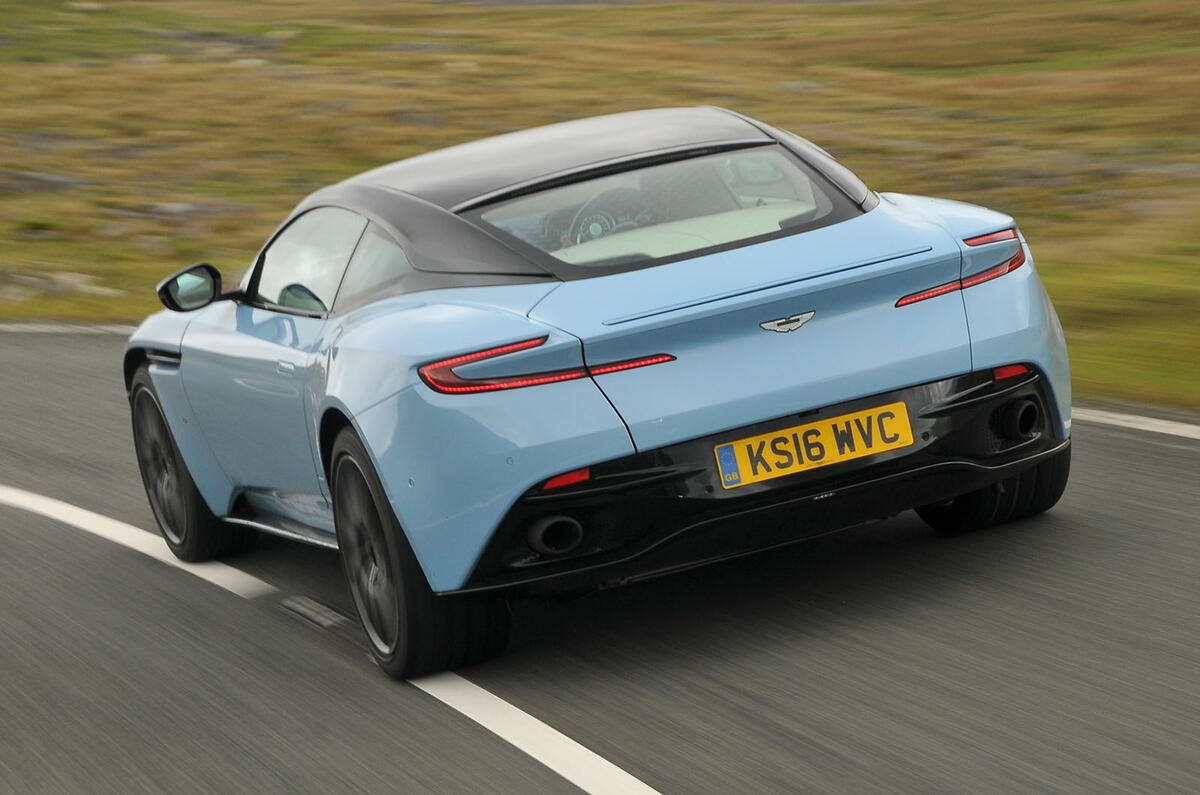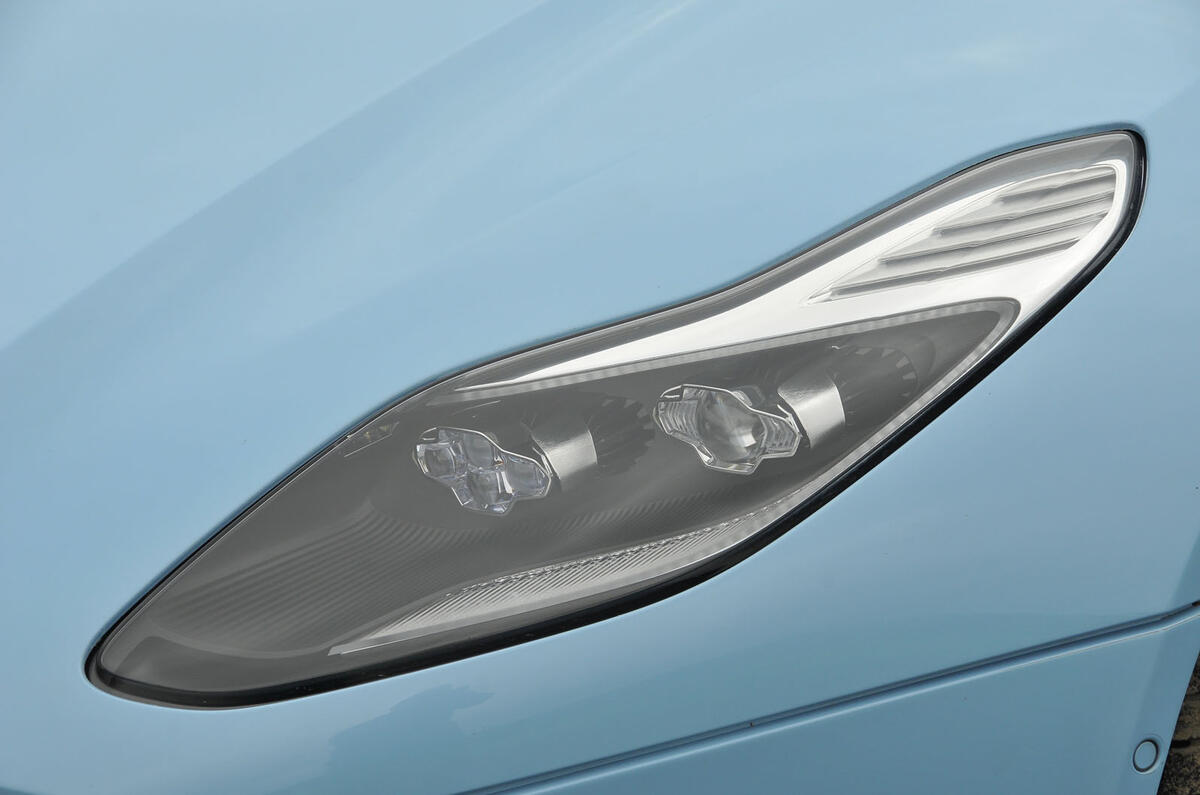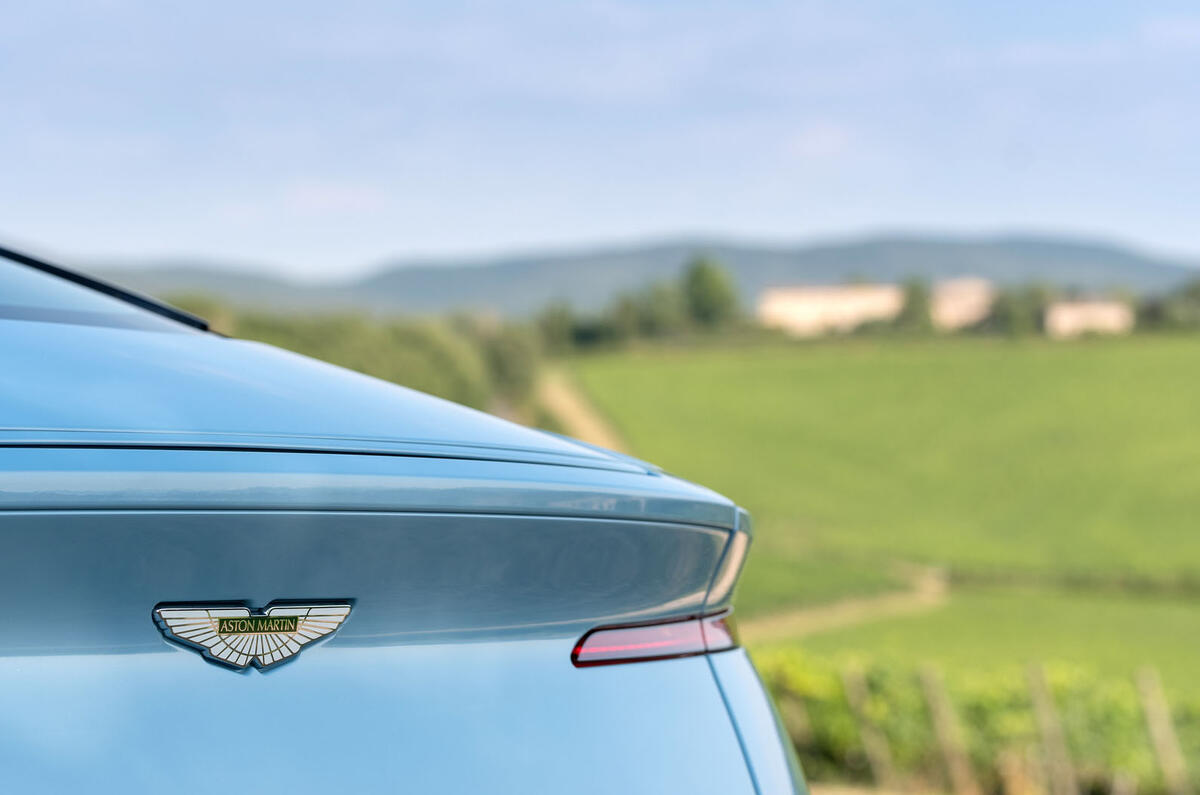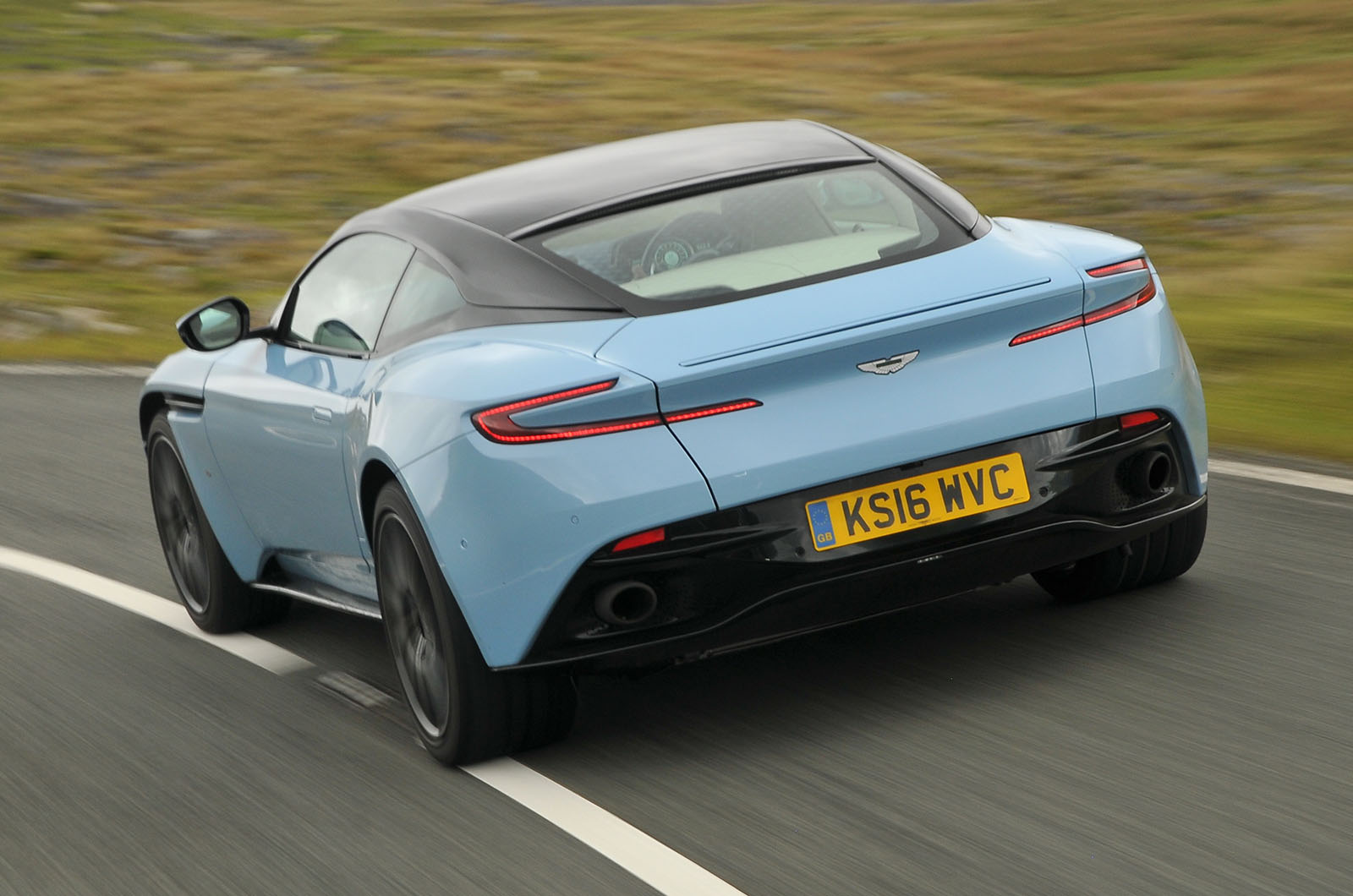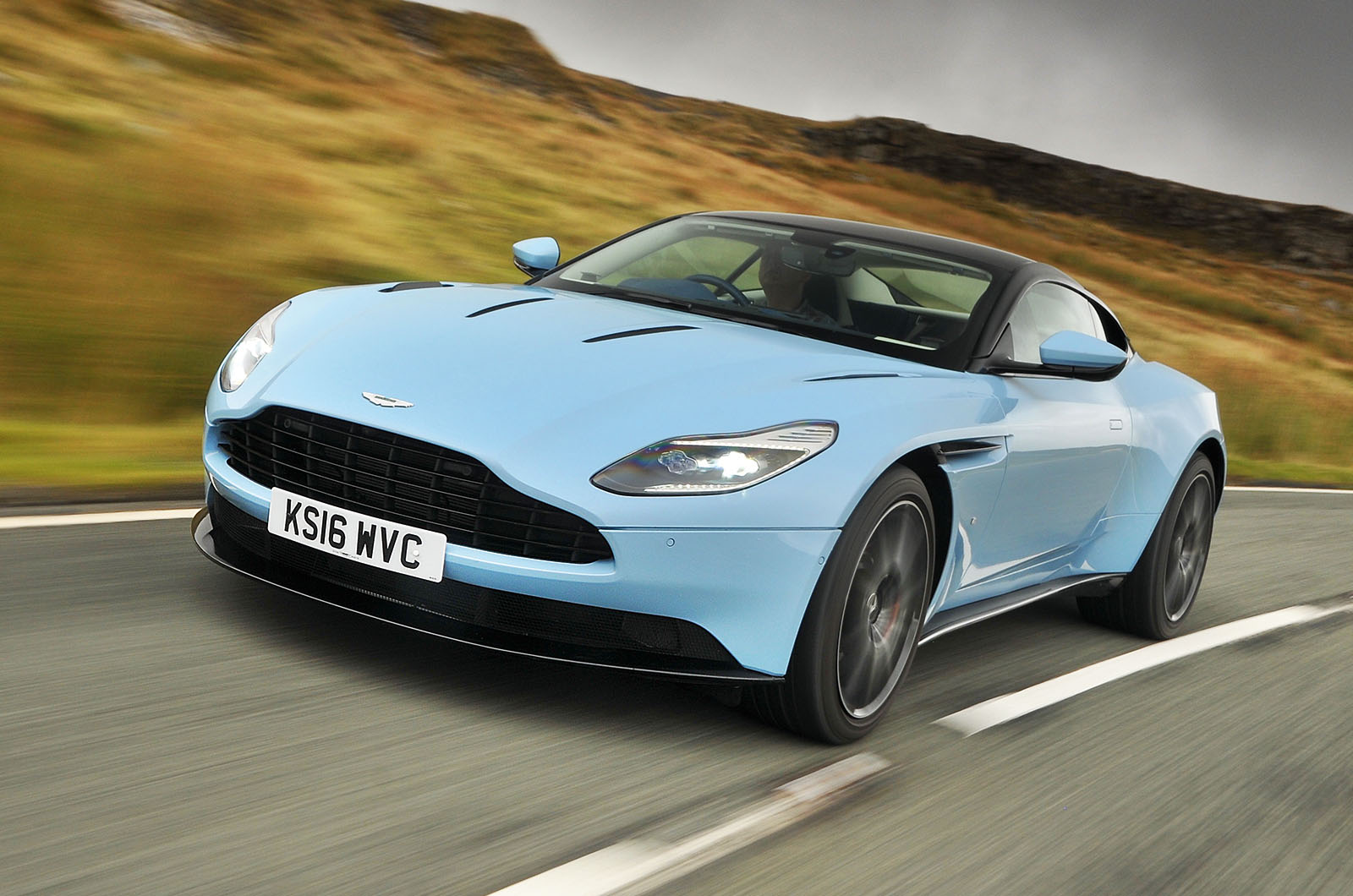The DB11’s door sills are notably slimmer than those of the DB9, making ingress easier as you swing your legs over and into the car’s deep and roomy-feeling footwell.
The high centre console and shapely, high-rise dashboard look familiar, but the instruments aren’t, while the material quality and integrity of the smaller fixtures is a real improvement. Where plain, cheap buttons, stalks, levers and switchgear dragged the DB9 down, you find mostly solid, grained, expensive-feeling fittings.
A satin-finish aluminium look is common to much of the trim, although not all of it benefits from the same authentic cool metallic feel.
But overall, the perceived cabin quality is many times better than that of its predecessor, and Aston Martin's newly developed skill with leather is impressive.
Instead of the fly-off manual handbrake sited outboard of the driver’s seat (as has been common to Astons for decades), you now get an automatic parking brake – which does rob the car of a little sense of occasion.
There’s a close cluster of column stalks sprouting on the left of the steering wheel, exactly as you’d find them on, say, a Mercedes-Benz C-Class.
There are no stalks at all to the right of the wheel, this being where Mercedes would locate its gear selector lever, whose purpose, in an Aston, is accomplished via the Park, Reverse, Neutral and Drive buttons on the centre stack.
It’s clear that all of this Mercedes-sourced equipment hasn’t been easy to integrate, but the overall effect is well worth the effort.
Conscious of criticism of the DB9’s meagre ‘plus two’ occasional back seats, Aston has improved rear space – but not hugely. By reconfiguring the rear differential and fuel tank, occupant space has grown by a couple of inches on rear head room and more than three on leg room, Gaydon says.
Frankly, you’d still only recommend the back seats for very small adults or children, as is the way of things in the two-door GT class.
The better news is that luggage space has almost doubled to make for a short but still fairly accommodating boot of 270 litres, so the DB11 is at least as usable as any car in its class.
As is on-trend right now, the DB11’s 8.0in colour multimedia set-up is presented like a docked tablet rather than hidden away inside the fascia. The merits of this are debatable, particularly when the permanently fixed screen has such an impact on the shape of the dashboard.
More important, however, is that the system is fine-looking, feature-rich, responsive and intuitive to use. There’s absolutely no mistaking that it’s Mercedes’ Comand Online system reclothed and graphically tweaked around the margins, but when that system is one of the market’s best, that’s no bad thing.
You can use the touch-sensitive track pad or rotary wheel to interact with it, both of which we prefer to a touchscreen interface. Failing that, the voice recognition control is very good, just as it is in a Mercedes-Benz.
Aston Martin gives you 400W of audio power, DAB radio, Bluetooth media streaming and a wi-fi hub as standard. There are 700W and 1000W premium audio upgrades available as options, the latter sounding predictably excellent.



